PC Engine 'Jail Bar' Video Noise
A common complaint from PC Engine and TurboGrafx 16 owners is there are
vertical stripes visible in the video signal. They are spaced about 10
pixel apart and show up most prominently in sold patches of colour on
screen. The video noise is visible from some consoles more than others.
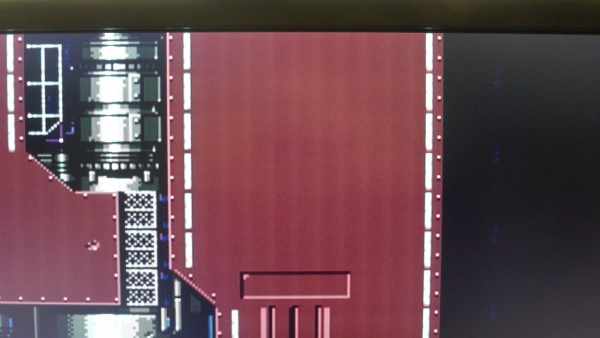
Symptom screen shot. The noise is clearly visible in this large red area on screen.

The HuC6260 is the console's RAMDAC, the
chip responsible for converting the digital video information from the
output of the graphics chip (the HuC6270) into an analog video that a
television set can use. The visible noise in the video signals is
coupled in through the RAMDAC's power supply rails.

Here's a pin listing for the HuC6260
showing the power and ground pins for the analog and digital sections
of the chip. Most of the descriptions for non-power pins has been
omitted for clarity.
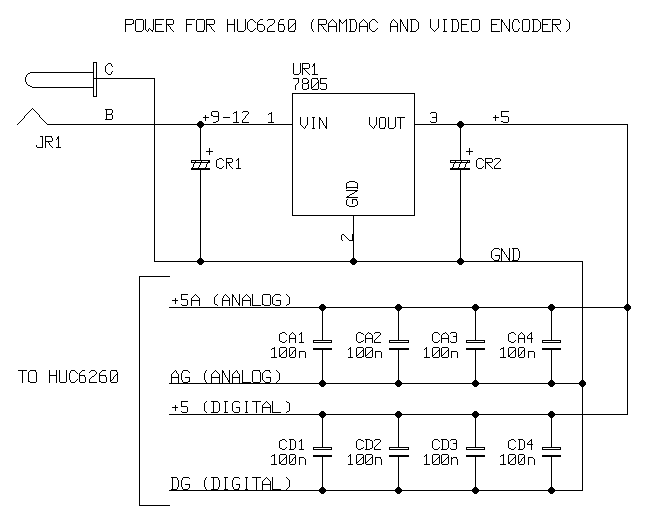
Here's a circuit diagram which shows the
usual power supply arrangement for the HuC6260. The chip is divided
into an analog part and a digital part, with separate power supply
pins for each. There are ceramic decoupling capacitors mounted near
the analog pins, CA1-4, and near the digital pins, CD1-4. Some console
versions have fewer capacitors, but the arrangement should be the
same. Both the analog and digital supply rails start at the same point
near the output of the voltage regulator UR1. From here they connect
through separate traces on the motherboard to the supply pins of the
HuC6260 chip.
The decoupling capacitors on these power rails (CA1-4, CD1-4) is usually insufficient to prevent noise entering the analog video signal. As there are four capacitors in parallel across each power rail (each of 100 nF), the combined capacitance is 400 nF (0.4 uF). For much better decoupling performance, I recommend replacing just one capacitor on each rail (ie. one on the analog side, one on digital) with another of a greater capacitance. Advances in ceramic capacitor technology made since these consoles were new means this replacement capacitor may have an order of magnitude more capacitance and still be of the same physical size as the original (or even smaller).
I recommend the following replacement capacitor type.
The decoupling capacitors on these power rails (CA1-4, CD1-4) is usually insufficient to prevent noise entering the analog video signal. As there are four capacitors in parallel across each power rail (each of 100 nF), the combined capacitance is 400 nF (0.4 uF). For much better decoupling performance, I recommend replacing just one capacitor on each rail (ie. one on the analog side, one on digital) with another of a greater capacitance. Advances in ceramic capacitor technology made since these consoles were new means this replacement capacitor may have an order of magnitude more capacitance and still be of the same physical size as the original (or even smaller).
I recommend the following replacement capacitor type.
| Capacitor type: Ceramic
(MLCC) Package size: 0805 Capacitance: 4.7 uF Maximum voltage: 16V or 25V Dielectric T.C.: X7R |
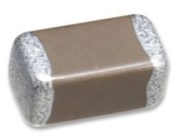 |
General Procedure
- Disassemble the console and find the HuC6260 chip on the motherboard.
- Find the power supply decoupling capacitors close by.
- Work out which are for the digital side and which are for the analog side. Usually there are three or four on each side. They can easily be grouped together by their proximity and the large power tracks on the PCB which they connect to. It doesn't matter which group is digital and which is analog.
- Pick one from each group (it doesn't really matter which one exactly) and use the continuity check feature of your multimeter to confirm that the capacitors are indeed for power supply decoupling. Both caps are connected between 5V and ground.
- Remove two caps from the motherboard (if necessary) and replace with the 4.7 uF replacement caps.
Note: When I use component designators, C923 for example, I am referring to the hardware in the photographs, which may be different to your own hardware.
PC Engine Duo [PI-TG8]
 |
This version has the HuC6260 chip mounted on the underside of
the board at the front of the console, near the HuCard slot. The power supply decoupling caps are found on the top side of the motherboard in the same spot. I will replace two capacitors, C923 and C909, with the larger 4.7 uF replacement. |
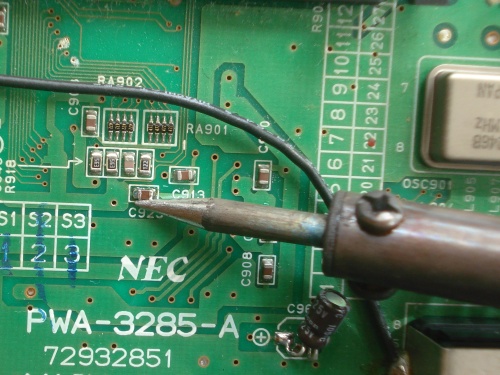 |
The technique to remove this surface mount capacitor with an
ordinary soldering iron is simple. Tin your hot soldering tip and place it next to the capacitor in such as way as it is making contact with both sides at the same time. Feed extra solder into the tip so that both of the cap's solder joints melt at once. Once the solder joints are molten, simply slide the component off its pads and off the motherboard. Never mind if there's extra solder on the board. You can clean it up easily with some solder wick |
PC Engine [PI-TG001] (original white version)
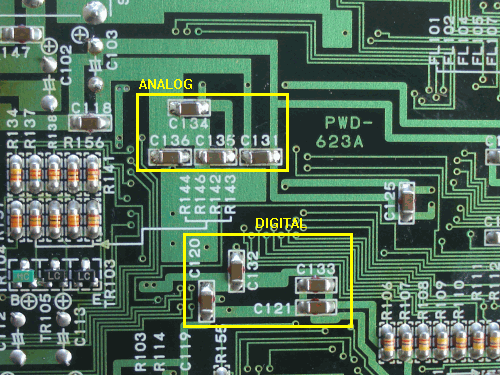 |
When the console is opened from the base and the metalised shielding flap is removed, the underside of the motherboard is visible. The HuC6260 is mounted on the top side with its decoupling capacitors directly underneath on the underside. |
 |
I have replaced capacitors C135 and C133 with the 4.7 uF
replacement. The ceramic decoupling caps in this particular console are the larger (physically) 1206 size. It is still possible to fit an 0805 cap in its place as can be seen in the photograph. |
TurboGrafx-16 [HES-TGX-01]
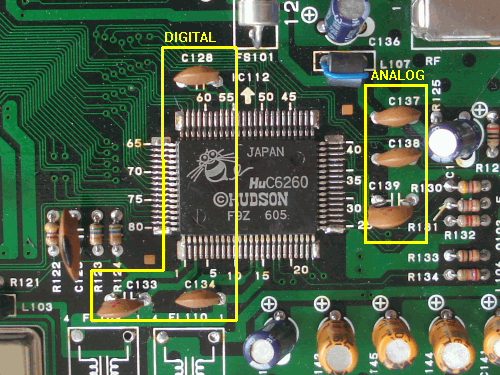 |
This console has all of the components mounted on the top side
of the motherboard. The bypass capacitors are through hole, ceramic disc capacitors. |
 |
Instead of replacing the capacitor, it is easier to leave it in place and solder the replacement cap between its legs as seen in the photograph. I have attached replacements to decoupling caps C134 and C139. |
Change Log
5/1/2016 - Page Created.
6/1/2016 - Corrected typos, etc.